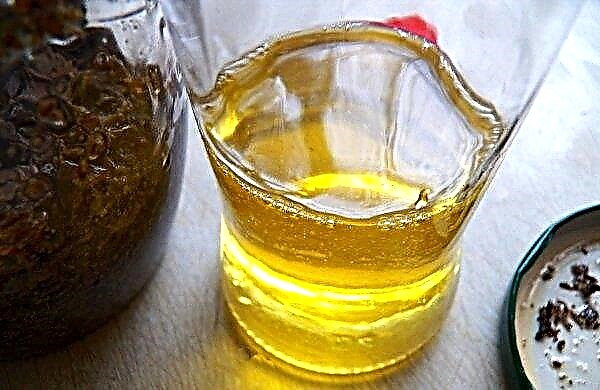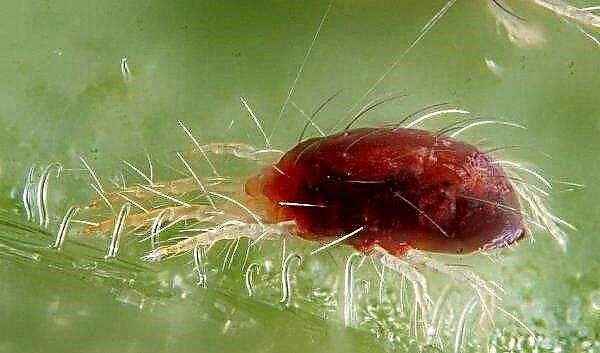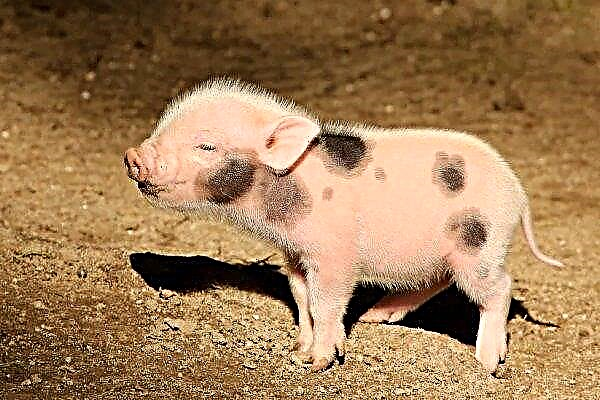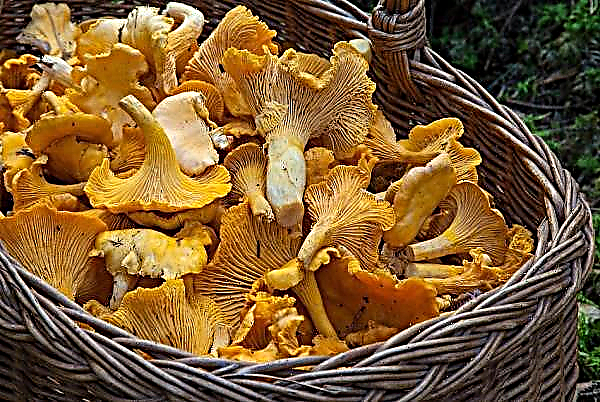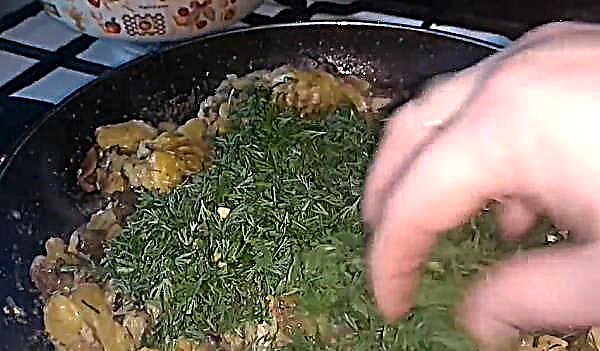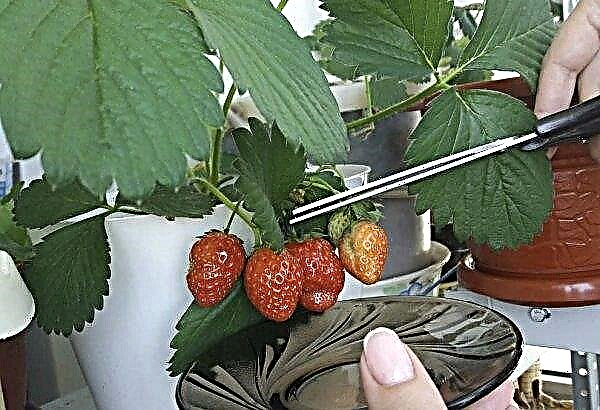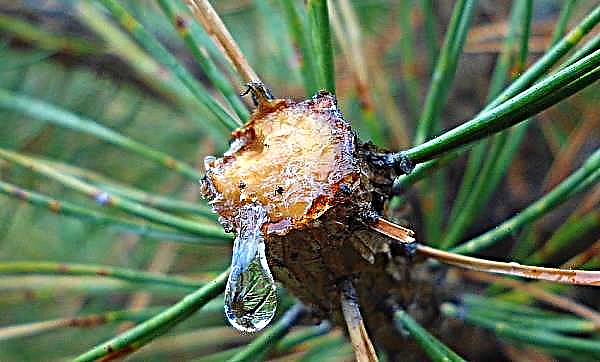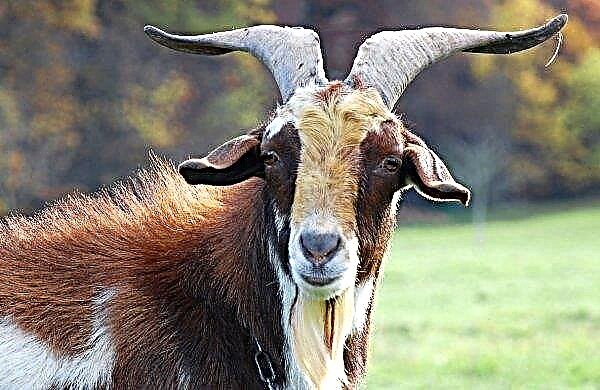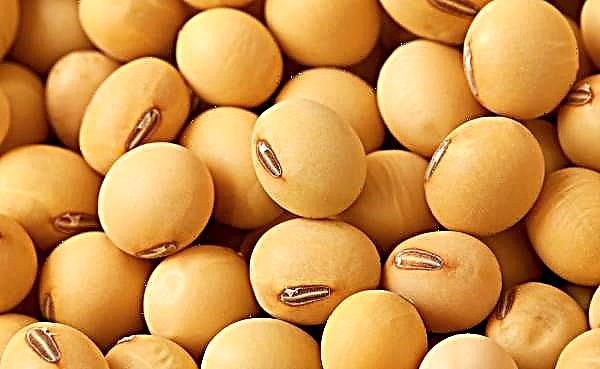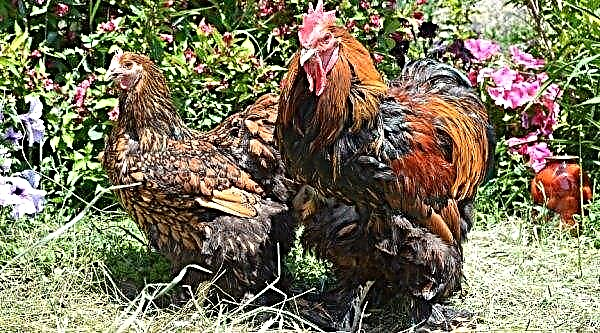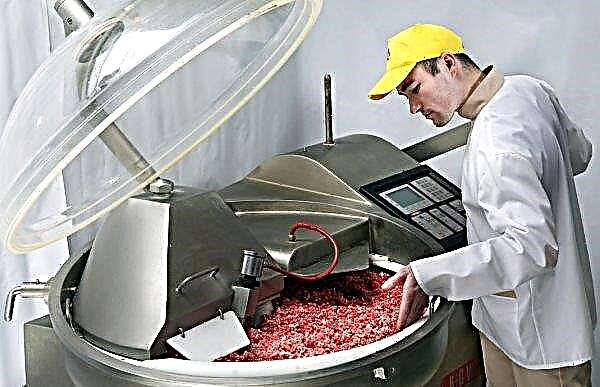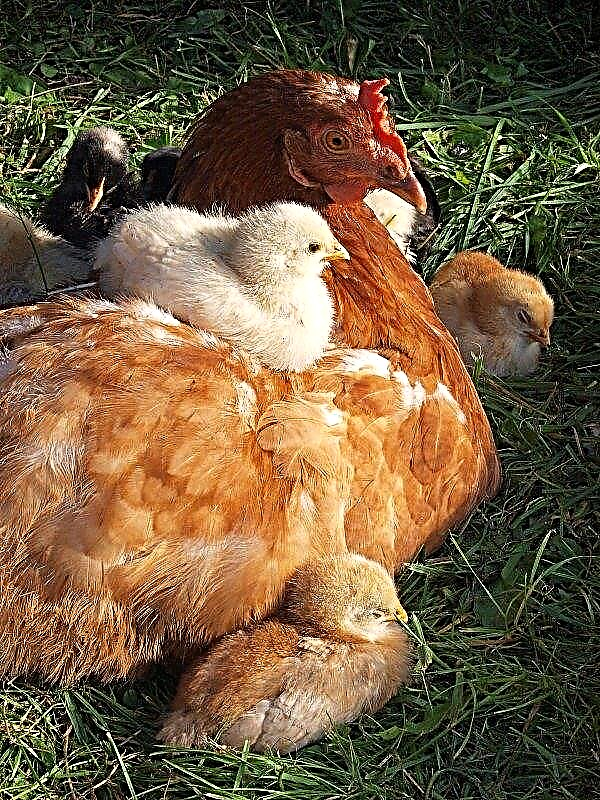All the advantages of the design of a personal plot can be emphasized with the help of a well-groomed lawn. When choosing grass for sowing, attention should be paid not only to decorative qualities, but also to the resistance of plants to external stimuli, as well as the level of whimsical care. The positive characteristics of such a plan have pasture ryegrass, which will be discussed below.
Botanical description of the plant
Perennial ryegrass or perennial chaff It belongs to the herbaceous flowering plants and is part of the Cereal family. It has a high growth rate. In the very first season after planting, it forms a dense lawn carpet - from 40 to 60 units per 1 m². The flowering phase lasts from June to September. Fruits appear in July - October. In the herbage can be from 5 to 7 years in the presence of optimal conditions for growth.
Botanical description of pasture ryegrass:
- rhizome - powerful, well-branched, forms a dense turf that allows you to strengthen the soil;
- plant height - 70 cm, in a culture usually from 15 to 50 cm;
- stem - erect, smooth;
- leaf plates - grow up to 20–30 cm and 3–5 mm in width, are painted in saturated green, narrowed towards the end, smooth, rough in the places of passage of veins;
- at the base of each leaf there is a reddish eye;
- inflorescences are solitary, formed at the ends of shoots, are complex ears of up to 15 cm long;
- the fruits are grains.
Applying grass ryegrass as a lawn
The rye grass lawn is highly resistant to trampling and grows rapidly.. Thanks to this, it has become popular in the design of sports fields, as well as personal territories. Already 1.5 months after planting, a dense green cover forms on the lawn. The considered type of grass will also help solve problems with shedding of soil on hilly terrain.
Did you know? In 1830, the master Edwin Beard, who worked in a British textile factory, received a patent and permission for mass production of the first lawnmowers designed by him personally. As a prototype for the production of equipment, a modified machine was taken to trim the edges of fabric rolls.
Use in lawn mixes
The plant of this type is actively used in lawn mixtures from various herbs. In terms of total weight it should not be more than 25%. Usually ryegrass is used in combination with meadowgrass and fescue. 
The chaff sprouts literally in a week and prevents the growth of weeds, which has a beneficial effect on the development of plants that are part of the lawn mixture. But this will be relevant only if the consumption norms are observed. If we neglect the proportions of adding ryegrass seeds, then the lawn will be with bald spots, since a large number of cereals will suppress the growth of other representatives of the flora.
Did you know? The most expensive lawn in the world covers Wimbledon tennis court in England. And its basis is pasture ryegrass.
Advantages and disadvantages
You need to approach the design of the lawn carefully, so you should first familiarize yourself with the advantages and disadvantages of the plant. This will help to understand how to better organize care and avoid mistakes during cultivation.
- The main advantages of ryegrass:
- trampling resistance;
- fast growth;
- soil strengthening;
- can play the role of a siderat plant - such specimens enrich the soil with useful micro and macro elements, help improve its structure, reduce the frequency of erosion and shedding, especially on slopes; usually such herbs are purposefully sown to improve the land before planting vegetables and fruit crops or when the soil is very depleted;
- after mowing, it retains the ability to quickly recover and grow;
- long lawn life;
- high resistance to drought and shading.

- There are not many cons; they are all associated with the botanical characteristics of culture. The disadvantages include:
- poor tolerance of high humidity;
- low frost resistance;
- high demands on the level of acidity of the soil and its nutritional value.
Choosing a place and sowing rules
You can choose any area for sowing ryegrass seeds; the main thing is that it is not flooded in the spring and autumn by natural precipitation. The main condition for good growth is high-quality seedbed preparation.It’s best to carry out planting work in early spring, when the danger of freezing frost is past. This will allow you to enjoy the beautiful lawn in the summer. But if necessary, you can sow throughout the warm season, until the beginning of October.
Soil preparation should begin approximately half a year before planting.. At the first stage, the site is freed from plant debris and weeds. Then they plow the earth to a depth of 40 cm and begin to engage in disinfection. To do this, use herbicides - such drugs help to avoid future weed germination on the lawn. The Tornado preparation has proven itself well: it is diluted in a proportion of 75 ml per 3 liters of water and this amount is enough to process 100 m² of area. The solution is sprayed on the site.
3 weeks after treatment with herbicides, you can begin to enrich the soil with nutrients. For ryegrass to develop well, the earth must be loose. To ensure this condition, 10 kg of peat and sand are added to each 1 m² of area. In parallel with these elements, manure is laid: on the basis of 1 m² 10 kg of cow feces or 3 kg of poultry are taken. Immediately after the introduction of nutrients into the soil, it is again plowed to a depth of 40 cm.
Step-by-step process of sowing ryegrass:
- 3 days before the manipulation - for each 1 m² add 40 nitroammophoski. Spread the fertilizer evenly over the soil, then water it. If the soil is moist enough, then top dressing should be repaired into it to a depth of 5 cm.
- Divide the site into small squares of arbitrary size - this will evenly distribute the planting material. To accomplish the task, it is best to arrange the stakes along and across the entire perimeter of the plot, and stretch the threads or wire between them, thereby creating square zones.
- The seed consumption per 1 ha is 10 kg. Based on this parameter, you should divide the entire mass of planting material evenly for each of the zones.
- Sprinkle seeds crosswise in each square.
- Walk through the crops with a rake, following the direction of planting (crosswise). This will deepen the seeds to the required level.

Lawn Care
Creating a lawn will not cause you trouble. Further care for planting is also very simple, but has some nuances and features. In addition to the following, you will need to pay attention to protecting the vegetation from diseases.
The main events that need to be carried out throughout the season:
- watering;
- fertilizing;
- a haircut.
Important! If in the zone of growing ryegrass there is sufficient rainfall and the soil in the territory is constantly wet, then irrigation should be abandoned altogether.
Watering
The first month after sowing, you need to water the lawn daily, morning or evening. The liquid flow rate per 1 m² of area is 10 liters. Subsequently, in the summer period, the above time frames for irrigation are maintained. In autumn and spring, manipulations are performed every 3 days.
Fertilizer and fertilizer
In order for the grass cover to grow quickly and delight the eye with its decorative effect, special attention must be paid to top dressing.
Fertilizer Schedule:
- In the spring, immediately after the snow melt - “Bona Forte” every 10-15 days for 2 months. Dilute the drug at the rate of 80 ml per 12 liters of water. This amount will be enough for watering 6 m².
- Summer end of June - Once nitroammophoska in the amount of 40 g per 10 liters of water. This will be enough for 1 m² of plantings. Then, in the middle of July and the end of August, fertilize with potash salt at the rate of 20 g per 1 m². If the summer is rainy, then the amount of fertilizer is increased to 40 g, since potassium is quickly washed out of the soil.
- In the fall, 10 days before the first frost - double superphosphate in an amount of 70 g / m². It is bred in water or scattered in its original form in the area.

A haircut
The first lawn mowing should be done when the grass reaches a height of 8 cm. Manipulation should be carried out in dry weather, sharpened by a scythe. Leave a stubble with a height of 3-6 cm. In the future, the procedure is carried out regularly, maintaining a given height throughout the season. On average, the frequency of manipulation is once every 2 weeks. The last mowing is allowed in early November.
Winter hardiness
Lawn grass ryegrass has a low winter hardiness and does not tolerate strong snow. The maximum temperature at which botanical and decorative characteristics are maintained is -18 ° C. During prolonged cold weather and heavy snowfall, it can generally come out of the grass stand, or bare patches form on the lawn.
Important! Ryegrass is suitable for creating lawns only in regions with a temperate and southern climate.
Diseases and Pests
Pest damage when growing ryegrass is not noted.
Of the diseases, the following may occur:
| Problem | Solutions |
| Fusarium | Fertilize with potassium salt at the end of August at the rate of 40 g per 1 m², in winter, restrict access to the lawn. In spring, treat with Fundazolum (10 g per 10 l of water per 1 m²). |
| Dollar spotting | Spray with Benomil according to the instructions. Regularly remove dead wood, water in a timely manner. |
| Anthracnose | Repair damaged plants by combing the grass. To carry out the processing by "Systan", after 20 days - by "Camelot". To breed preparations according to the instruction. |

Ryegrass can be used to fill the lawn as an independent plant, as well as in grass mixtures. It has good resistance to diseases and pests, has a high growth rate and has soft foliage, which you can walk barefoot with pleasure. The main thing in its cultivation is to take into account botanical features and to carry out all agricultural activities on time.

